As our population ages rapidly, designers seek new ways to enhance people’s day-to-day experiences in later life. From improving mobility of the elderly on a very practical basis to helping senior users feel safer and cozier in their homes, these design product can help people lead fuller, healthier and more rewarding lives in an ageing society.
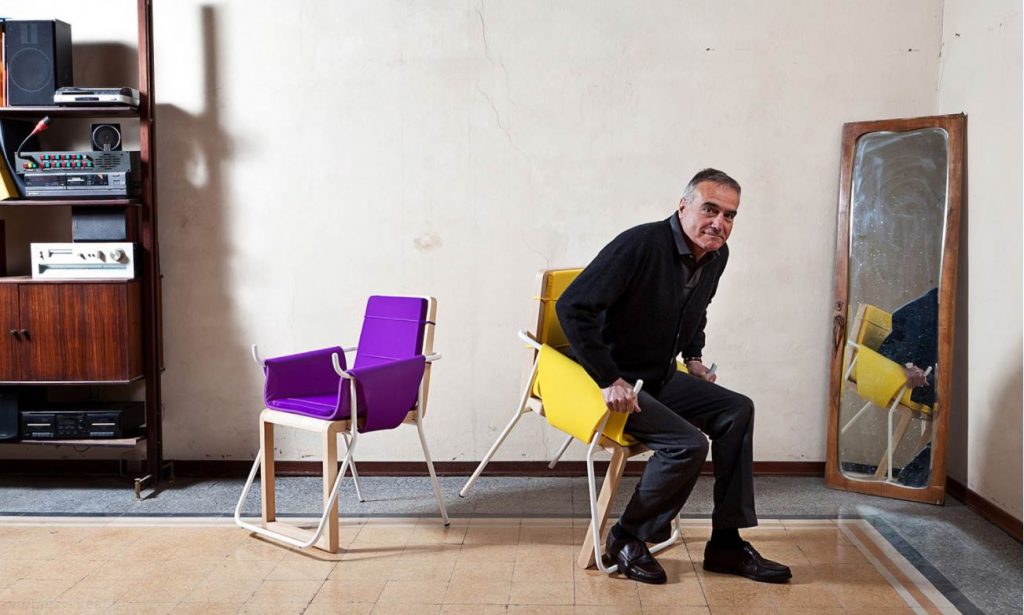

The Scooter for Life by PriestmanGoode
Aiming to provide users with more independence through greater mobility and encourage them to stay physically active for longer, London studio PriestmanGoode has prototyped The Scooter for Life, a vehicle that tackles the stigma associated with traditional mobility aids.

The Scooter for Life by PriestmanGoode
Throughout the development process, the design team performed a number of brainstorming sessions with potential users and discovered that many of them felt that current solutions felt like having ‘one foot in the grave’, which made them think of developing something as beautiful as it is practical. They developed the idea of ‘slowbility’, namely mobility for a demographic that doesn’t need to rush, that has time to enjoy the moment. PriestmanGoode have taken into consideration the requirements people had for a mobility aid and came up with a solution that ticks all the boxes.

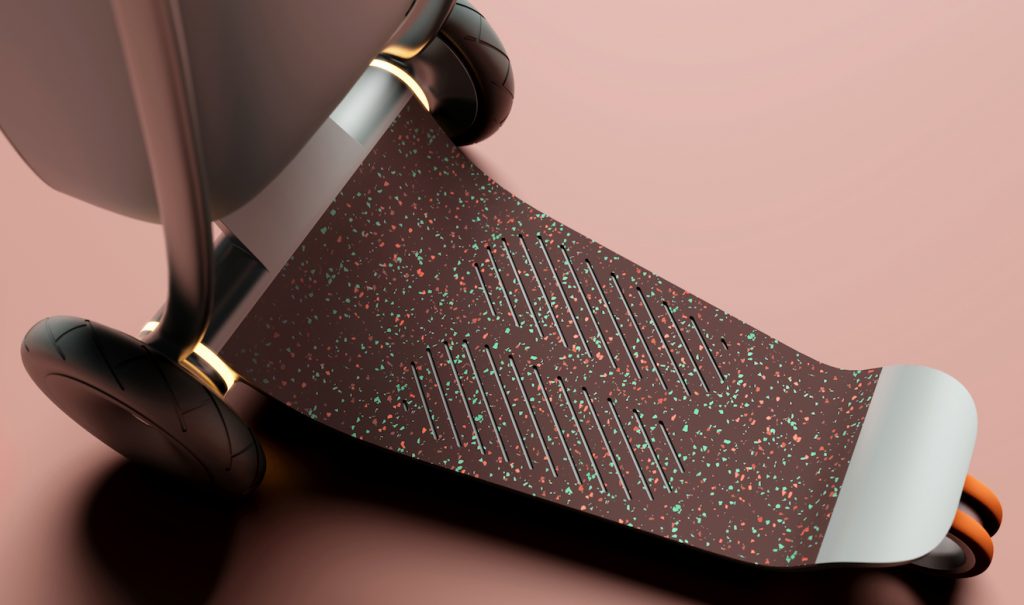
The Scooter for Life by PriestmanGoode
The easy-to-use multifucntional scooter only moves when you release the brakes, making it safer, while a three-wheel arrangement provides additional stability. The fold-down adaptable design enables the user to take the scooter on public transport, into a shop or into the home. The latter is particularly important from a safety point of view, as when existing bulky mobility scooters are parked outside the home, they highlight the fact that an elderly, seemingly less mobile person lives on the premises, thereby potentially increasing the risk of crime.
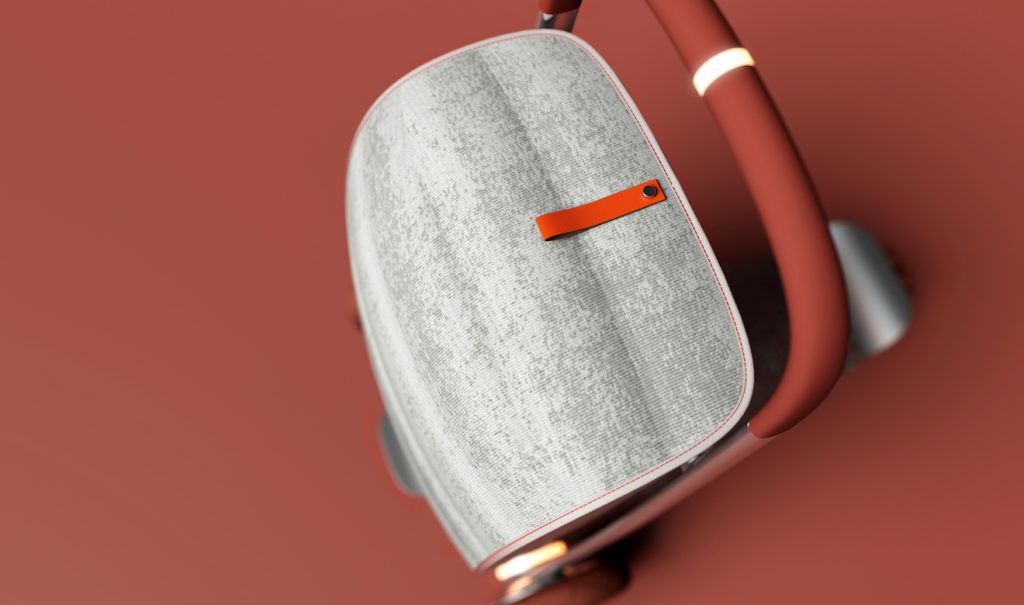
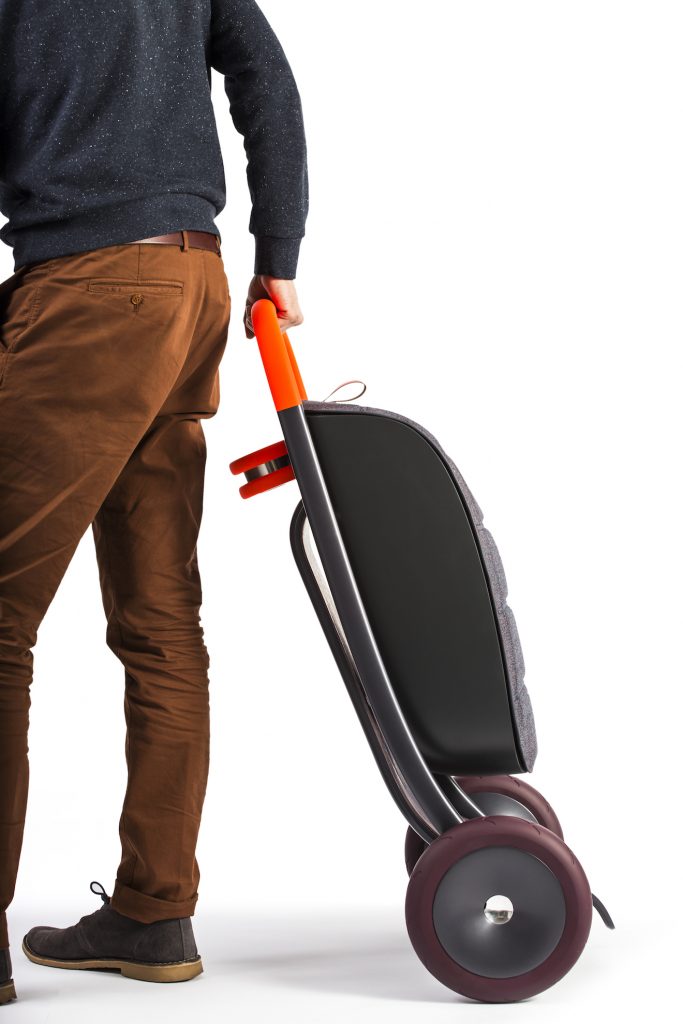
The Scooter for Life by PriestmanGoode
A large front basket functions as a shopping trolley, providing a place to carry groceries while leaving the user’s hands free. A foot plate converts between the two (scooter/trolley) modes, while all handles and grips require minimal physical effort. Optional seat and electric power would allow users to switch to electronic mode if powering by foot becomes too strenuous.
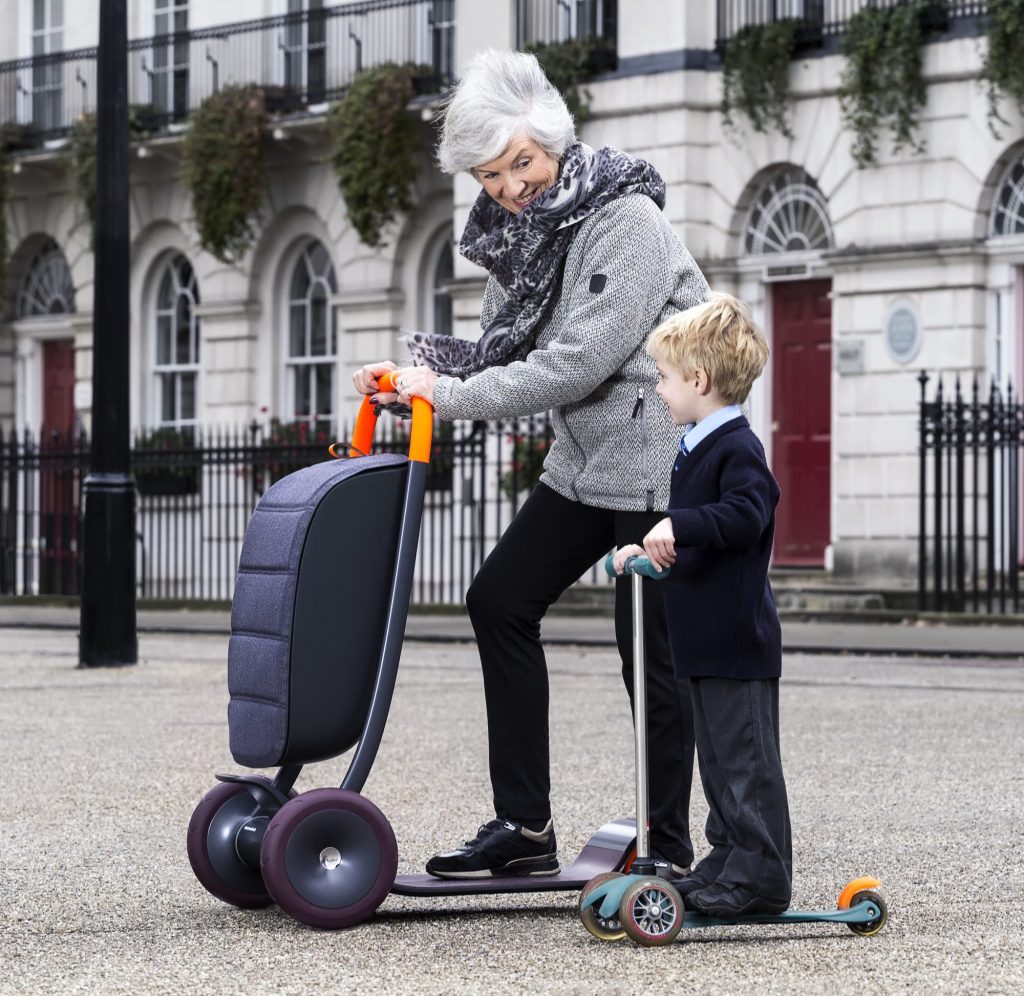
The Scooter for Life by PriestmanGoode
The team has also listed some additional features that would help increase safety and usability, such as registering regular routes where the scooter could map unsteady sections of pavement or a ‘take me home’ function, helping users with mild forms of dementia to get home safely.
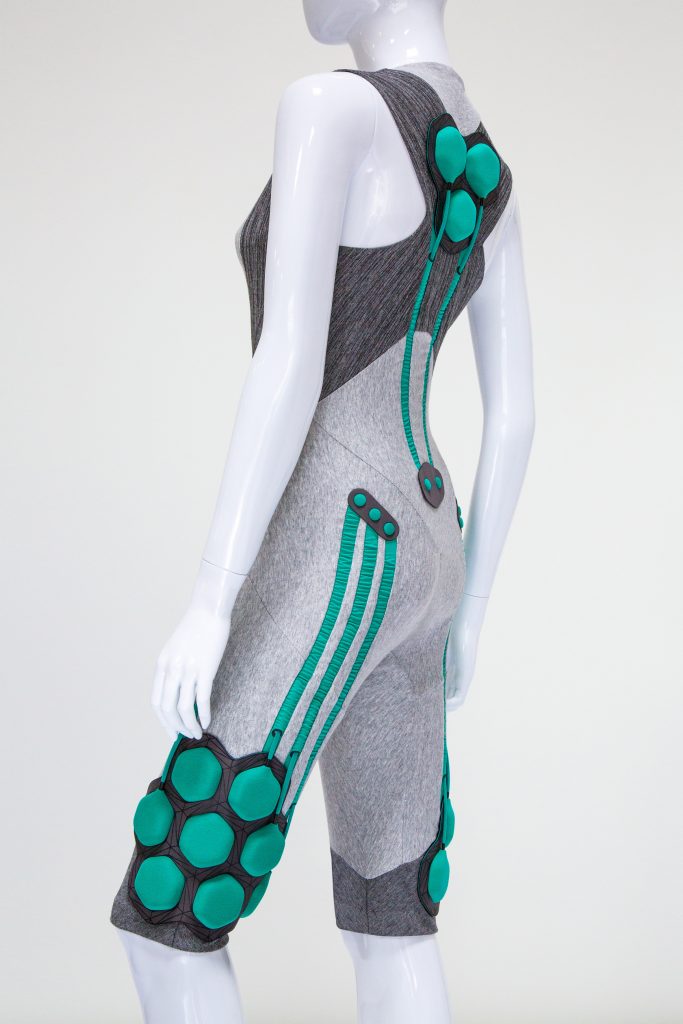
Seismic Powered Suit by Yves Behar and Fuseproject
Yves Béhar’s San Francisco based studio Fuseproject has collaborated with robotics company Superflex and employed robotic technology and AI to design the Seismic Powered Suit, the clothing that aims to provide the ageing population with a higher level of strength through a series of motors housed in hexagonal pods.


Seismic Powered Suit by Yves Behar and Fuseproject
These pods (or electric muscles) are embedded with sensors and attached to the fabric origami fold-ins that allow movement in three dimensions, permitting the hardware to expand, contract and move with the wearer, which assists the elderly wearers to walk, stand up and climb stairs. The pods can be removed to make the garment cleanable, while the fabric itself is lightweight and flexible.

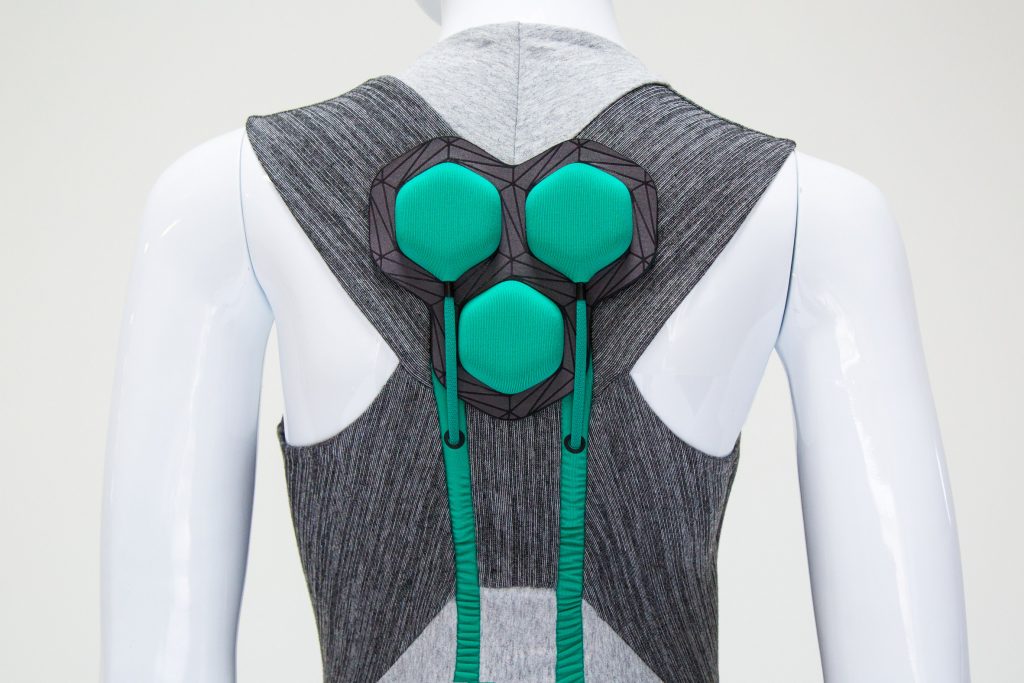
Seismic Powered Suit by Yves Behar and Fuseproject
For the suit to deliver its assisted movement, it has to grip the body while being comfortable. The garment’s configuration is anatomically aligned with the natural muscular composition of its wearer, while a V-shaped band within the fabric holds tightly around certain points on the body in order to maximize ergonomics.

Seismic Powered Suit by Yves Behar and Fuseproject
Although the prototype of the clothing display highlights the mechanics connecting each of the main muscle points, the team describes the final product as a suit with all these elements integrated into an elegant, minimal looking undergarment that hides its technology within.
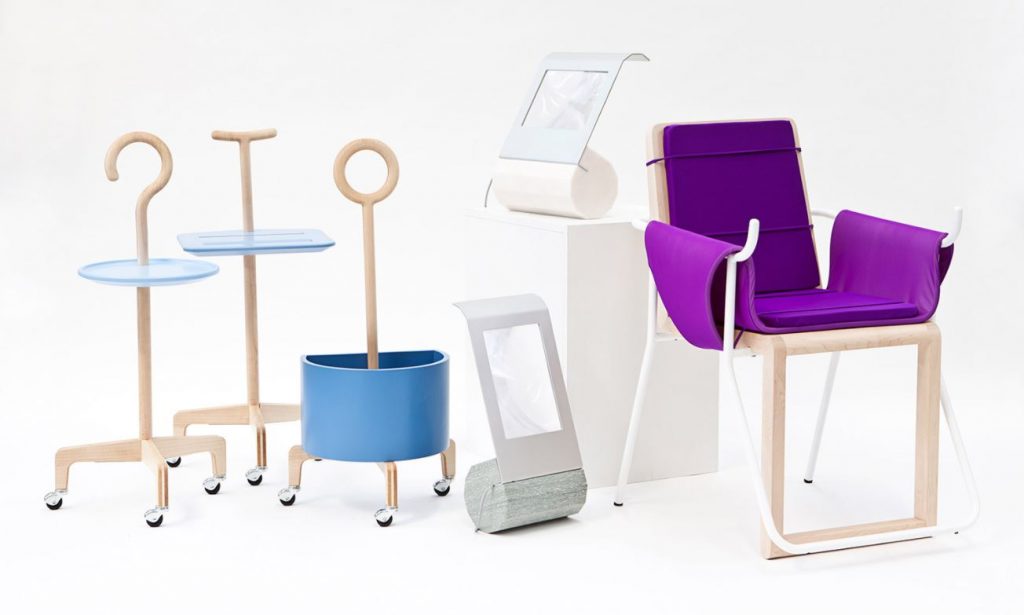
No Country for Old Men by Lanzavecchia + Wai (also header image)
Driven by the same desire to stand apart from the typical design framework for the ageing market with its clinical and sickroom aestethic, Italian-Singaporean duo Lanzavecchia + Wai has designed No Country for Old Men, a collection of design-minded aids for the elderly that would help the ageing users to accept their advanced stage of life.

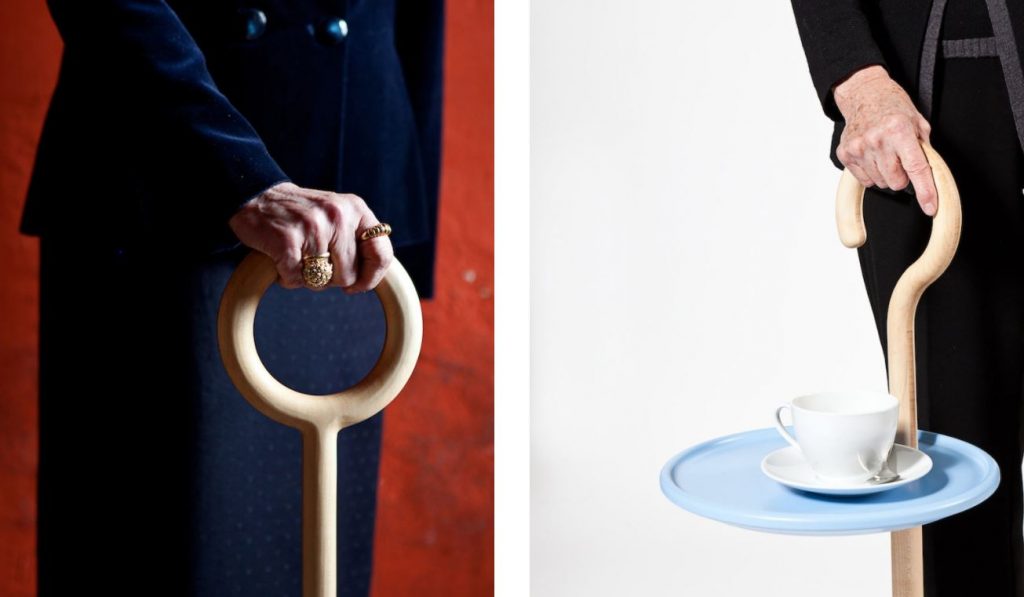
Together Canes by Lanzavecchia + Wai
The collection includes a series of walking aids, a lamp with a magnifying screen and a chair that helps the user to get up, all of which do not resemble marginalized medical products from the hospital context. Together Canes are T, U and I-shaped canes that not only provide interstitial support to the elderly, but also allow them to bring along their tea-time set and books, and also to prop up their iPad for viewing from the sofa or typing out an email.

MonoLight by Lanzavecchia + Wai
MonoLight is a table lamp with an integrated magnifying screen for those whose eyesight has deteriorated with age. It is anchored to a dodecagon-profiled marble base to enable various degrees of viewing angles. The user only needs to tilt the aluminium frame to adjust the angle, whilst the heft of the marble piece keeps it in the desired position.
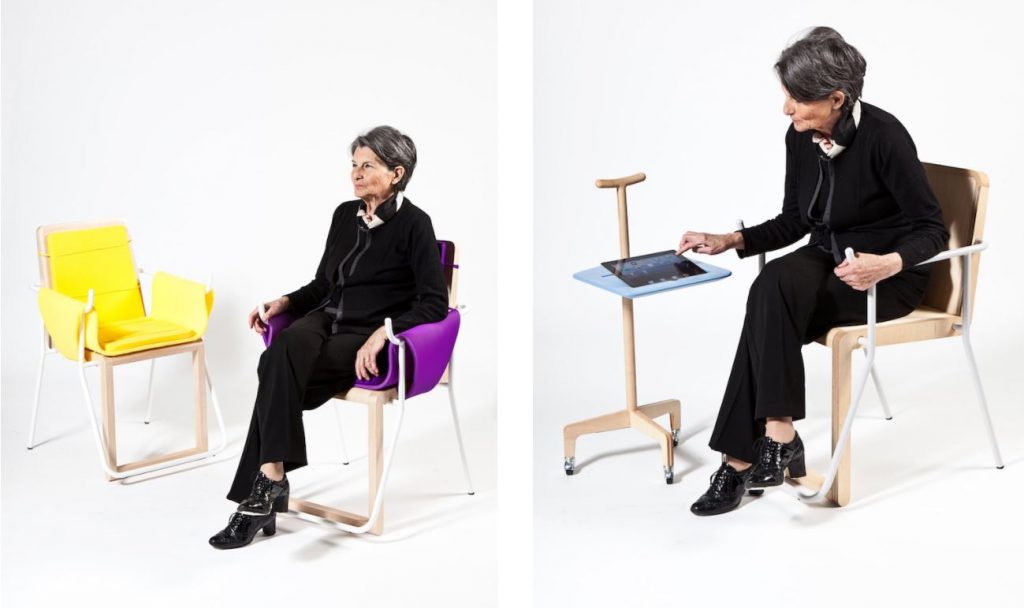
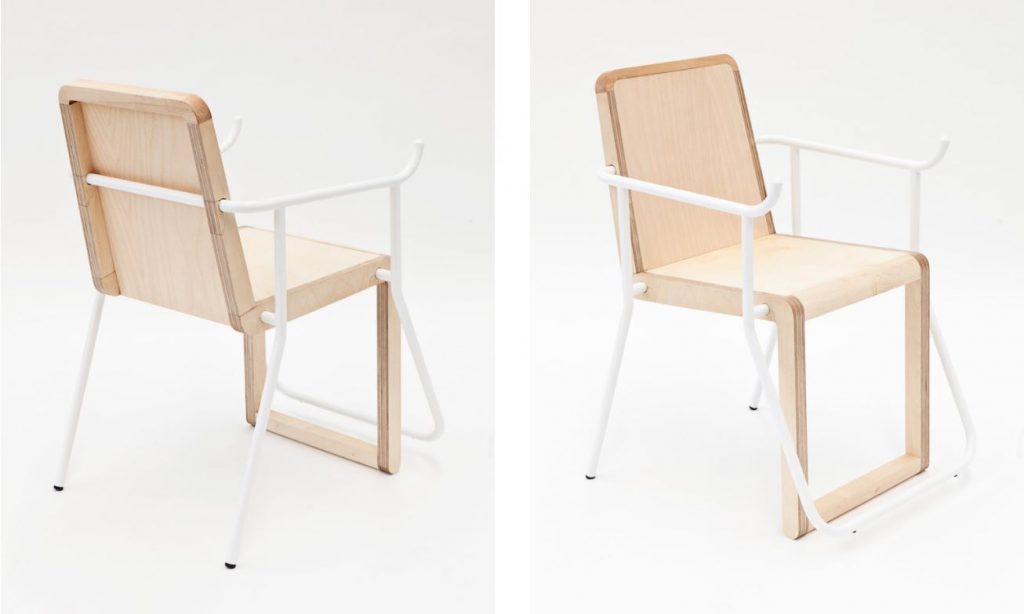
Assunta chair by Lanzavecchia + Wai
The Assunta chair tackles the problem of standing up from a chair, which can be difficult for some seniors due to muscle mass and strength losses. The design uses the person’s own body weight as a lever. The user should step on the foot bar to get up, while additional arm rests stability during the tilting motion that follows.
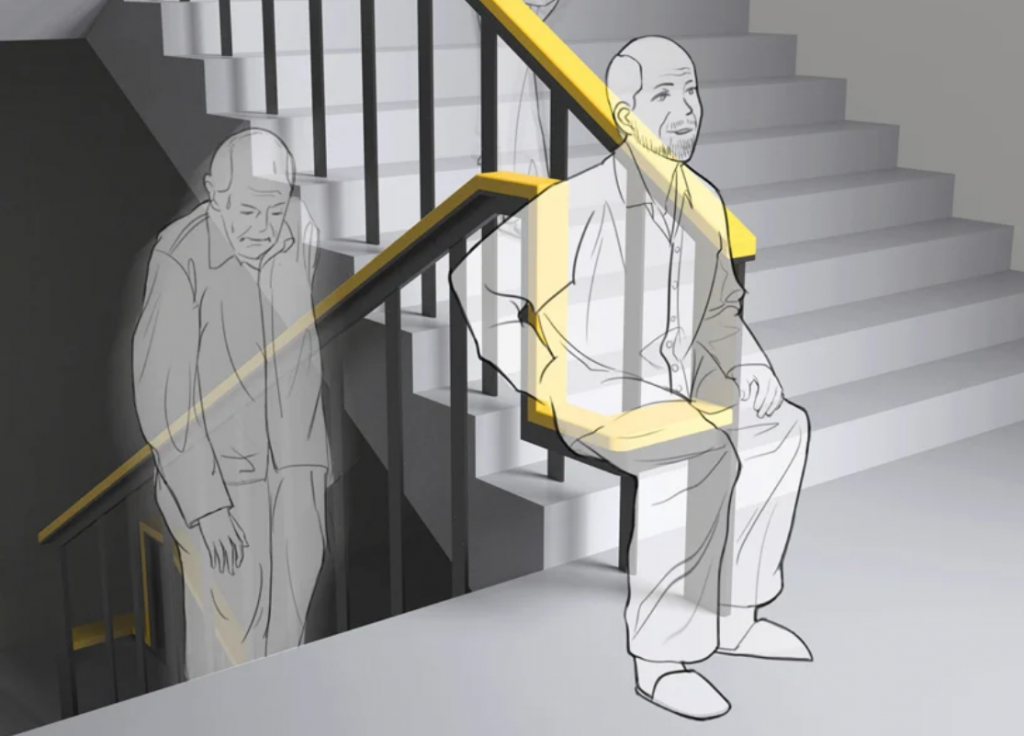
Rest for a While by Shenzhen Jinwei Innovation Design Company (via iF Award)
Climbing stairs in a high-rise can be equally challenging for some seniors. Shenzhen Jinwei Innovation Design Company (SJDC), China, has designed staircase railing that doubles as a seat for the user to rest before ascending the next flight of stairs.
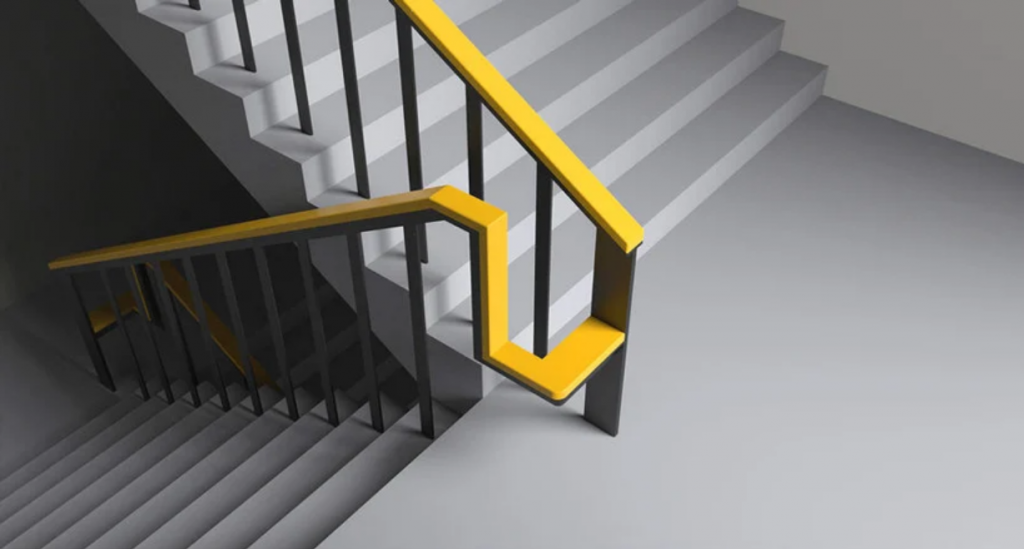
Rest for a While by Shenzhen Jinwei Innovation Design Company (via iF Award)
Named Rest for a While, the solution comprises a simple adjustment to the existing stair railing that could be applied with minimal difficulty – by adding a little bit of material shaped into a small at each stairwell landing. SJDC’s team (Jiahui Feng, Baojie Li, Shuikun Cai, and Longin Ma) envisions simply altering staircases in residential high-story buildings that are still not equipped with elevators to make staircases more accessible for older users.
The Rest for a While staircase handrail is a winner of the iF Design Award for the year 2020.